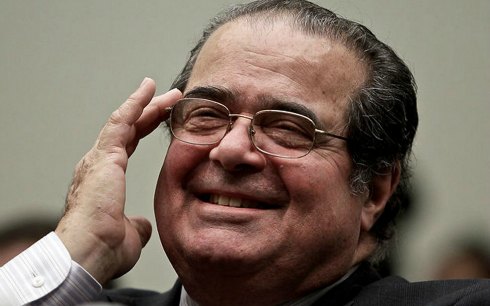
Last week, the Supreme Court’s conservative faction revealed more clearly than ever before its true colors. It showed that in the political war over America’s future it supports those who want to return to the exclusionary policies and practices of the past.
That this is guiding principle of Chief Justice John Roberts and Associate Justices Antonin Scalia, Clarence Thomas, and Samuel Alito is no surprise. But their contempt for using the law to right injustice and expand the franchise of democracy has never before been so nakedly displayed
The conservative justices’ posture was apparent not just in the decisions narrowing affirmative action and eviscerating the key “pre-clearance” provision of the Voting Rights Act of 1965. It showed itself as well in the court’s decision properly striking down the federal Defense of Marriage Act and in upholding a lower court’s ruling invalidating California’s anti-gay marriage Proposition 8. And finally, these justices’ callous conservatism was at the heart of the court’s limiting workers’ protections against harassment in the workplace. That latter decision, Vance v. Ball State University, received far less media attention than the other cases.
But, like them, it underscores the fact that, albeit the progress forged in protecting individuals’ rights, discrimination – especially against people of color, White women, and gays and lesbians – remains a constant in large and small ways.
The conservatives’ opinions of last week have as much to do with establishing “fairness” as the court’s infamous Citizens United decision of 2010 had to do with “free speech” for multi-billion-dollar corporations. On the contrary, it was merely the smokescreen for freeing the conservative elite to spend billions of dollars to defeat President Obama in the 2012 presidential election.
Similarly, an oily pretense saturates the conservatives’ positions in the Vance, Voting Rights, and affirmative action cases. They have nothing to do with racial fairness. Instead, like the notorious 1896 Supreme Court decision in Plessy v. Ferguson, they hide their intent to shore up White privilege behind sham notions of “color-blindness.”
It’s worth remembering that in the Plessy era, a rhetorical allegiance to color-blindness was central to racists’ assertion that the doctrine of “separate but equal” was a fair ordering of American society. Such a notion – effectively the law of the land for the next six decades – was not only profoundly undemocratic but, operationally speaking, nonsensical. That the Plessy court accepted it provoked Charles L. Black, Jr., the White legal scholar who had allied himself with Thurgood Marshall and the Civil Rights Movement, some 60 years later to characterize the 8-to-1 majority opinion as one in which “the curves of callousness and stupidity intersect at their respective maxima.”
Professor Black’s words fit both the radical views of the court’s current conservative faction – and the increasingly overt breaches of professional decorum of three of them. From Thomas’ refusal to ask questions during cases’ oral arguments, to Scalia’s racist and homophobic comments on and off the bench, to Alito’s misogynistic behavior toward Justices Ruth Bader Ginsburg, Sonia Sotomayor and Elena Kagan, they’ve shown that, in fact, they have little respect for tradition and propriety.
Across the land last week Republican legislators and operatives jumped to take advantage of the conservative factions’ blows against democracy: drafting more restrictive voter-identification laws; pledging to overturn existing gay-marriage laws in the states that have them and enacting a constitutional ban on gay marriages; further undermining affirmative action via state laws and referenda; and proposing further laws restricting women’s right to decide whether to have an abortion.
There’s no doubt that many, if not most of these efforts are also designed to again put these issues – and the landmark Roe v. Wade abortion-rights ruling – before the Supreme Court within the next two years. But consider some of the key political and social developments of these first years of the 21st century:
- The conservative faction’s gift of Bush v. Gore was supposed to break Black Americans’ political spirit and influence. In fact, the Black vote became even more important as more Blacks streamed to the polls, defeating the Republican Party’s neo-Jim Crow voter-suppression efforts in state after state.
- A decade ago, many forecast that the sudden emergence of the issue of gay marriage would sharply undermine the gay rights movement and produce a steep decline in the fortunes of the progressive coalition. But just the opposite has occurred.
- A decade ago, conservatives were boasting that Latino Americans were on the verge of flocking to the GOP “Big Tent” – before they realized they couldn’t – and still can’t – turn off the neon-lit “Whites-only” sign blocking the tent’s entrance.
- And now, last week, when it seemed the forces of reaction in the Texas state legislature were going to steamroller an extreme anti-abortion measure to passage, Democratic State Senator Wendy Davis’ startling filibuster gave the progressive coalition a new heroine – and re-affirmed this political era’s over-arching lesson.
That is that conservative actions provoke victorious progressive reactions. That means that in terms of the future of America, blue is a “truer” color than red.
Lee A. Daniels is a longtime journalist based in New York City. His latest book is Last Chance: The Political Threat to Black America.
